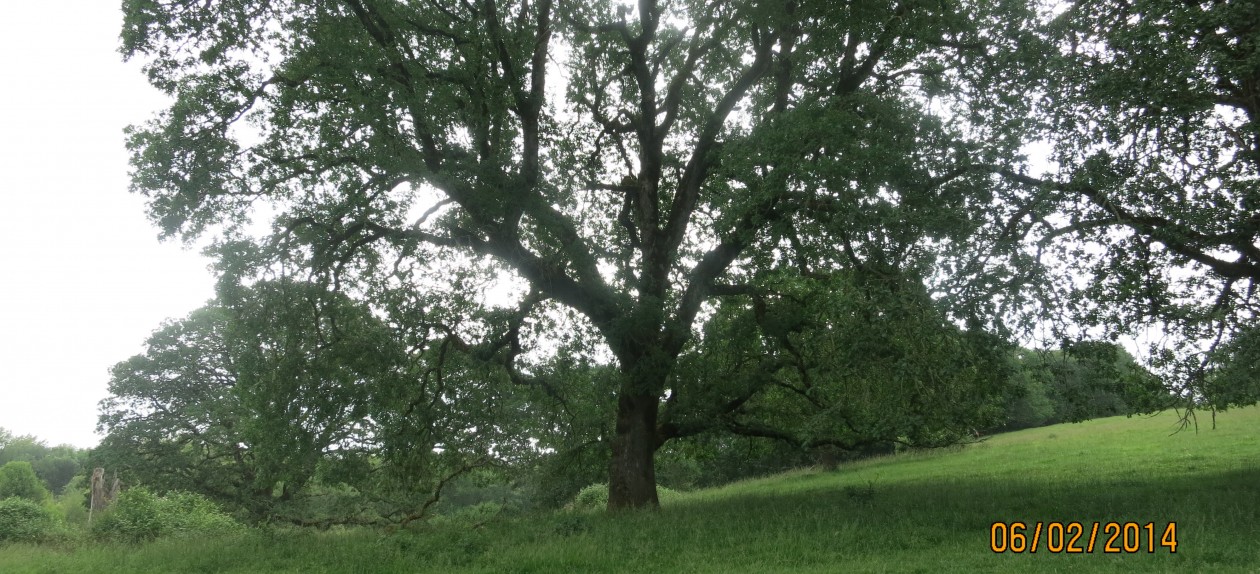“Come on, Charlie, take these dishes into the kitchen.”
“In a minute, Mom.” Mom is Allison, my daughter-in-law, and the Peter Viehls have arrived at Black Butte for summer vacation.
Charlie is “pitching” his idea (his word) for the Hundred Acre Wood, which he has not yet seen. He would like to include a swimming pool, a ground-level trampoline, a tennis court, and an ATV racing track . . .
“Charlie,” I tell him, “you can swim in the creek.”
“Too cold,” he says.
Everyone can dream, of course. But there will probably not be any swimming in the creek or elsewhere on the property. I think we’ve oversold our “farm” to the grandkids.
Yesterday, at the property, we met a group of five habitat professionals from the above alphabet of agencies to walk about and see what should be done in the way of restoration. Not a few surprises were in store for us.
Larry began by outlining the situation. Like, we’ve only owned the place for two weeks. We pretty much have no idea what we have and what do with what we have. We just want to improve it, improve the soils, the grasslands, the oaks, the creek banks. Let’s take a walk, then, we all agree.
Down to the creek, and on the way, Sam, of NRCS (that would be Samantha in more formal context) identified the fragrant blue, low growing herb-like plant that the bees were harvesting. Pennyroyal, which was used historically for various remedies, including abortion. UNSAFE, says my source on Google, may cause death. Right. But it’s pretty, blue, has a mint-like fragrance, and is an indicator species of wetland terrain.
Down by the creek, Jarod, of USF&W pointed out a cluster of poison oak. Everyone looks with disapproval at my ankle-length pants, tennis shoes with footies. They all wear, I notice, sturdy boots and denim jeans. Check.
“It’s an island!” they exclaimed. “Fabulous! You’ll need a kayak to get around down here come winter.” Hmm. Doubt it, as I’m not your water-sport enthusiast. Can’t see myself paddling down the stream or over to the island for watercress, or whatever. But onward we marched.
Onto the portion of the place we’d identified as our wetlands. Again, great excitement from the pros. Seems we have a huge drift of tufted hair grass. Native! We feel proud. Sam, who works in wetland restoration is particularly pleased.
Now we headed up the steep oak woodland. Which we think is pretty and cool. But no. The trees are far too dense, crowded, and should be diminished by at least half. Whoa. That would be a huge load of firewood, and what would it look like? Tom, of NRCS, the oak tree guy, says they really don’t know, but expect that over time, the trees left standing would develop the typical rounded shape of Oregon white oak, and the canopy would provide the shaded understory the area enjoys now.
Up to the savannah. We learn about the grassland which is not, unfortunately, native at all. Bentgrass where there should be fescue or orchid grass. And it needs “disturbance.” As provided earlier by native peoples setting fires, or elk and deer herds. As these methods are not available to us, it means chemical application, mowing, or, ta da: cows! Yes! The cows are back in the picture. But they should be rotated, fenced in, of course, monitored. This sounds fine, if the cowherd (is that the correct word?) agrees to terms.
Whew. We had a little conference standing on the hoped-for site of our little house, and all those folk from the agencies offered advice, the most helpful of which was to relax, watch the seasons unfold, decide what resources we wish to apply to the challenges, and to understand that they are eager to help us with our overall goal of restoration. As proof of that, we both had emails when we got back to Portland from a couple of them cataloging agencies and contact info and, most astonishing, an aerial photo of the property dating from 1936. Wouldn’t recognize it!
On the way back to our cars, Sam observed that our pear tree was sure amazing. Huh? We have a pear tree? We do, about 18 feet tall, at least, and laden with fruit. How had we failed to see it? Now I want to find one of those tall fruit harvesting sticks with a little basket on the end so we can gather the pears before they ripen and fall to the ground. I love this!
